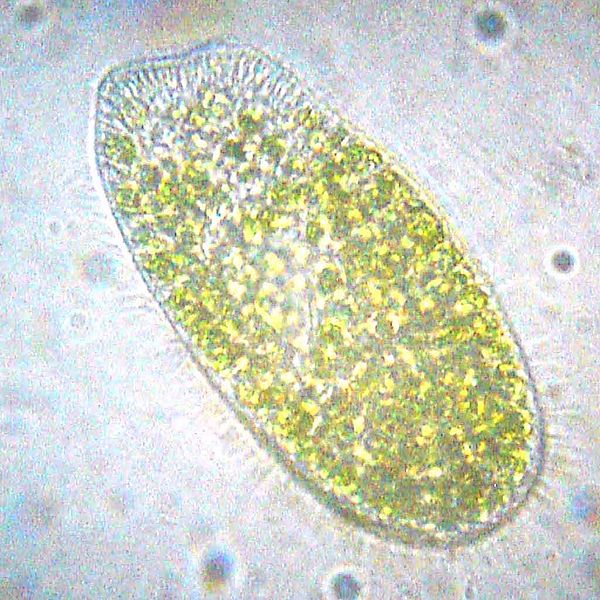1.5 The origin of cells
Understanding how eukaryotic cells developed
There are examples of present day cells which engulf other cells to help each cell in its functions. This is called symbiosis. One way the two cells can help each other is increased concentration of cytoplasmic oxygen and carbon dioxide would be made available to each of the cells. If we compare this to free living prokaryotes where the cells are not so close the rate of diffusion of materials will be much greater inside the cytoplasm than in open water solutions.
 http://en.wikipedia.org/wiki/File:20090719_062218_ParameciumBursaria.jpg
http://en.wikipedia.org/wiki/File:20090719_062218_ParameciumBursaria.jpg
A well observed example of an engulfing symbiosis is the protist Paramecium bursaria and an algae called Zoochlorella.The larger protist engulfs the green algae Zoochlorella and does not digest it.
The algae provided the paramecium with food and the paramecium moves the algae towards higher light intensity and gives it protection.
Each are using there different characteristics for mutual benefit. However this symbiosis is not quite the same as that proposed by the origin of eukaryotic cells as these two organisms can live totally independently.
Whereas the idea behind the endosymbiotic theory is that over the course of time the engulfed prokaryotic organisms become totally dependent on host cells and in effect become one organism.
